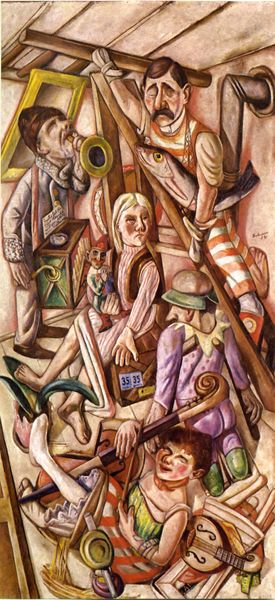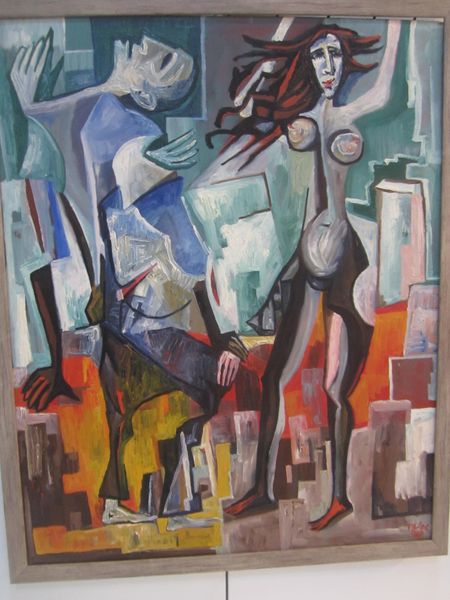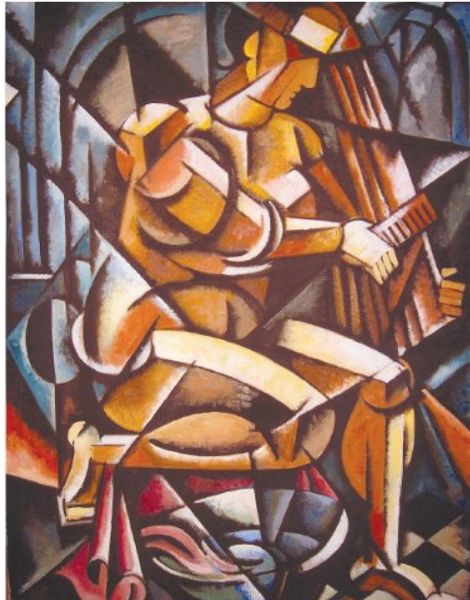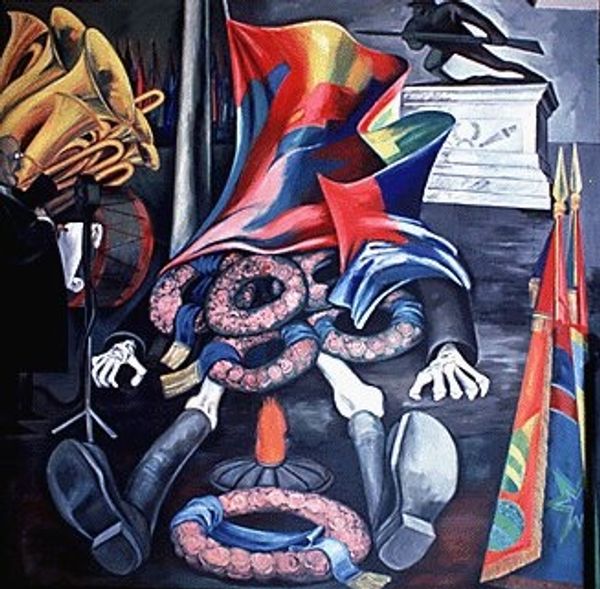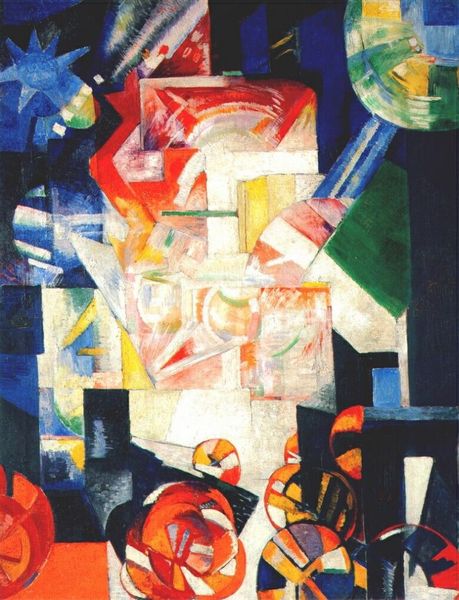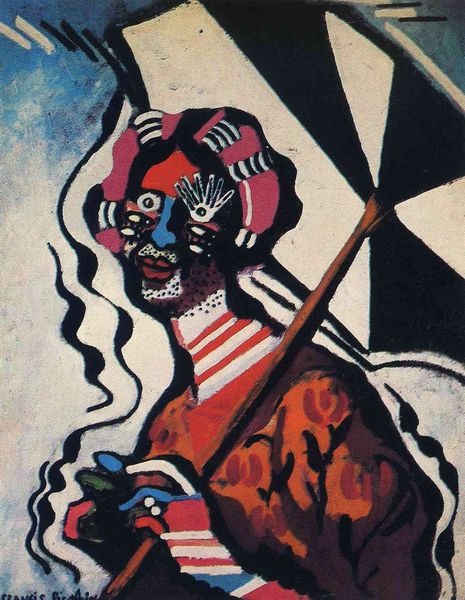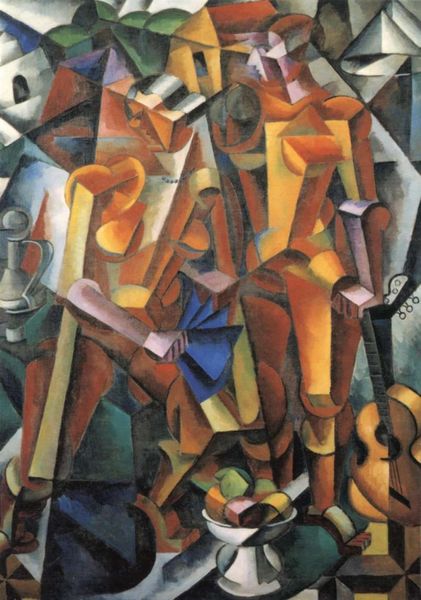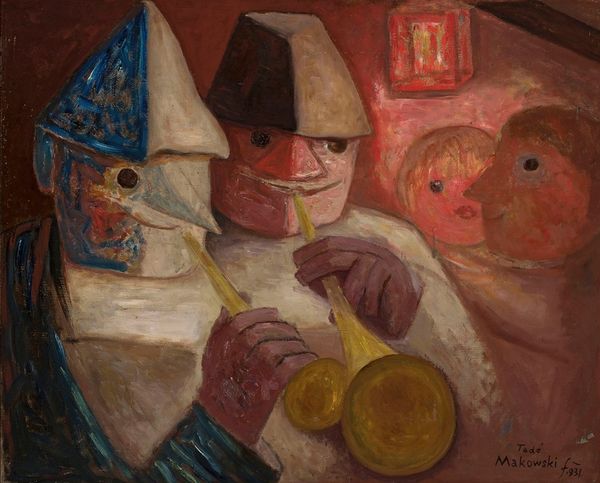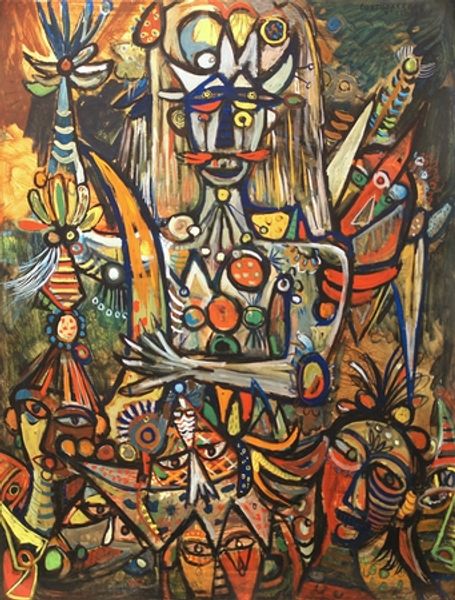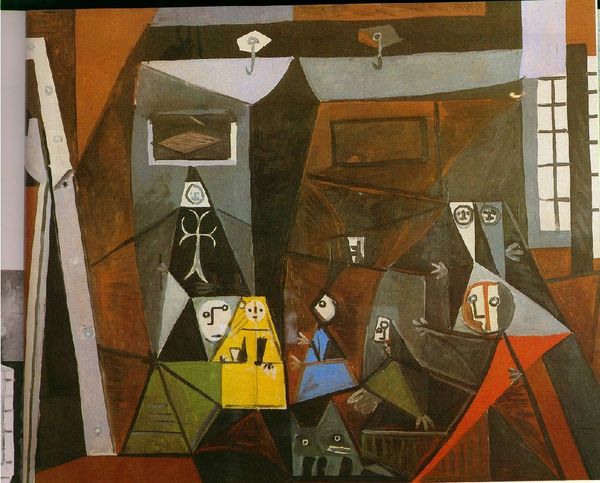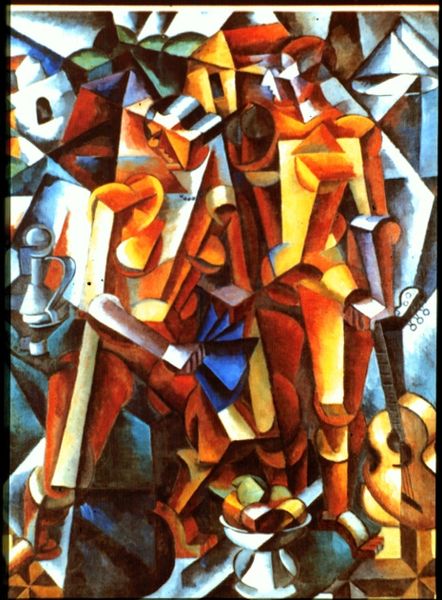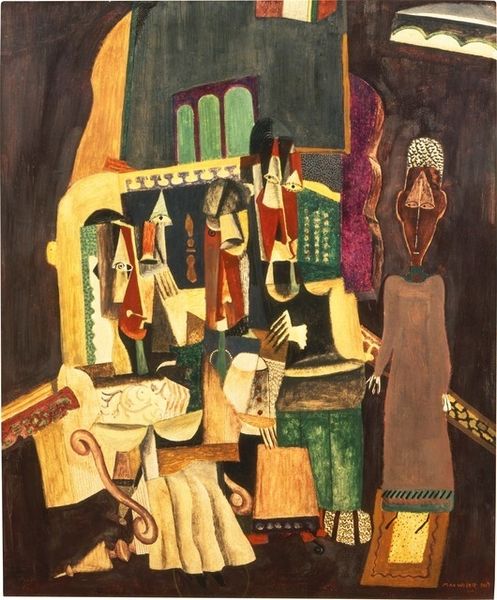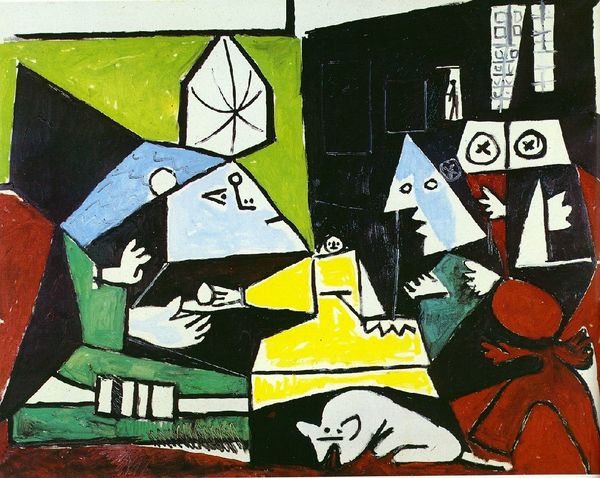
oil-paint
#
narrative-art
#
oil-paint
#
figuration
#
oil painting
#
group-portraits
#
expressionism
#
modernism
Copyright: Public domain
Editor: This is Max Beckmann's "Galleria Umberto" from 1925, created with oil paint. It feels almost like a bizarre theatrical scene. What’s your interpretation of the figures and objects he’s included here? Curator: Well, considering Beckmann's background and the time this was created, I immediately focus on the materials and their accessibility. Oil paint, by this time, was becoming increasingly industrialized. It offered a way for artists to rapidly produce and disseminate images. Look closely: how does Beckmann handle this medium? The thickness, the layering - is he embracing mass production or pushing against it? Editor: I see what you mean! The impasto is very pronounced. There's a tactile quality to the surface, pushing back against a smooth, mass-produced aesthetic. Curator: Exactly. Now, let's consider the social context. The rise of expressionism coincided with increasing social unrest and industrial changes. Beckmann was deeply affected by his experiences in World War I. Does that context inform the objects or characters represented? Editor: Definitely. There's a tension between the carnival-esque imagery and the palpable sense of anxiety. The acrobat suspended upside down, the strange costumes… is he perhaps critiquing the societal spectacles that distract from deeper problems? Curator: Precisely. Think about how the commodification of entertainment - like circuses and theater – might be seen in light of material production. Who profits? Who performs the labor? Beckmann's deliberately rough handling of the oil paint serves to make that production process evident, breaking the illusion of a polished spectacle. Editor: It’s like he's revealing the artifice behind the performance, using the materiality of the paint itself as a tool of social critique. Curator: Precisely. This painting becomes more than just an image, but an object imbued with labor, a challenge to our perception and consumption. Editor: Seeing the work through the lens of materials and their production adds a whole new layer of understanding. Curator: Indeed! Materiality isn’t merely about “what it is made of,” it is about “how it is made and its journey in culture".
Comments
No comments
Be the first to comment and join the conversation on the ultimate creative platform.
